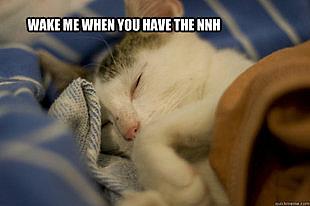Complete Health Reporting: Don't Skip Harms When Covering Medical "Miracles"

 This is part of my ongoing series explaining the 10 essential elements to writing a complete story about a treatment, drug or device.
This is part of my ongoing series explaining the 10 essential elements to writing a complete story about a treatment, drug or device.
Always explain the potential harms of a new treatment in terms readers can understand.
Reporters can be math averse. Many of them are risk averse, too, at least when it comes to reporting on harms associated with treatments.
Reporters sometimes treat medicine as if newer is always better. You know all the free advertising any product from Apple receives in the press? The same is true for most experimental drugs or devices. As Gary Schwitzer, HealthNewsReview.org's publisher, has often pointed out, the word "breakthrough" should be banned from media vocabularies.
"New glaucoma treatment signals breakthrough," says The Orange County Register.
"Marrow transplant breakthrough: The solution to save a man's life," says News 4 in Jacksonville.
"Medical marvel: stroke breakthrough," says The Newcastle Herald.
The Newcastle Herald goes so far as to compare a stroke treatment that appears to have been tested in just 25 patients with a miracle: "Lazarus, in the Bible, was raised from the dead."
If reporters do talk about the potential harms from treatments, they often only mention "common side effects," in passing the same way drug ads have done for years.
Here are three things that you can do to make sure you accurately and effectively account for the potential harms of a drug, treatment or device.
Find out how common the side effects really are. Do they occur in 3 to 4 percent of patients or 30 to 40? The numbers – even if small – matter. Remember that even if 3 percent of people experience a heart attack as a result of a treatment, that could translate into huge numbers across millions of patients.
Don't skip over "minor" side effects. In the glaucoma breakthrough article in The Orange County Register, Jane Glenn Haas asks a researcher, "Are there post-operative symptoms with the trabeculectomy?"
The response is telling:
Even after it's healed, there can be a blister on the surface of the eye. It can end up worsening symptoms of dry eye. It is better than nothing, but it is far from ideal.
This gives a reader with glaucoma solid information for making a treatment decision. Is dry eye worth the tradeoff for better vision? Depending on the stage of the person's life and the person's other health challenges, the answer might surprise you.
Find out the number needed to harm (NNH). As I explained with the number needed to treat, this can be a useful tool for explaining complicated research to readers. The UK's National Institute for Health and Clinical Excellence explains NNH this way:
The average number of patients who could be treated before an adverse event would occur. For example, if the NNH is four, then - on average - for every 4 patients treated, one bad outcome would occur. It is the opposite of absolute risk reduction. The closer the NNH is to one, the more likely it is that someone on the treatment will experience an adverse event. For example, if you give a stroke prevention drug to 100 people and two of them experience joint pain, the number needed to harm is 50 (that is, 100 divided by two equals 50).
Not all studies include the NNT or the NNH, but you can always ask the lead researcher to provide you those numbers. Also, you can do the calculations yourself and then check with an expert on the topic to see if you've done it correctly.
The Journal of the American Medical Association's JAMA Evidence site offers a handy online tool that allows you to plug in other numbers that might be more readily available in a study, such as the control event rate (CER), and the relative risk increase (RRI). Then it automatically calculates the NNH for you.
For example, in 2005, researchers published a study in Neurology that they said showed promise for treating Alzheimer's patients with an immunization called "Abeta immunotherapy." They also reported that the CER was 81.9% and the RRI was 21%.
What does that mean for the average reader?
If you used JAMA Evidence's calculator, you would find that it means that for every 15 patients immunized with the drug in question, known as AN1792, one patient suffered an adverse event.
What type of adverse event? Well, this particular trial was halted because too many patients suffered from meningoencephalitis – inflammation of the brain -- after the immunizations.
My fellow reviewer at HealthNewsReview.org, Kevin Lomangino, suggested that I include NNH in this piece. I asked him for his thoughts on what to keep in mind when reporting on harms. Lomangino is the editor of Clinical Nutrition Insight, and one of the sharpest minds in health. He told me:
Information about new treatments often comes from sources who have an interest in promoting the therapy, and that may lead them to gloss over issues that don't fit with their narrative, like potential harms. Even when researchers don't have an obvious commercial conflict, they're often enthusiastic about the concept they're studying and want to see it receive favorable coverage in the media. That's why it's always a good idea to talk to someone who's not invested in the research and can give an objective account of the risks and benefits.
Talking to independent sources is one of the pillars of good health reporting, and you might be surprised how often stories rely on one conflicted source. I'll write more on that in upcoming posts.
Related Posts:
Complete Health Reporting: Keep NNT on the Tip of Your Tongue
Complete Health Reporting: How to Make A News Release Work For You in 55 Minutes
Complete Health Reporting: News Releases Should Spark, Not Replace Good Questions
Complete Health Reporting: Always Ask About Costs
Photo illustration: quickmeme/Magic Madzik via Flickr

